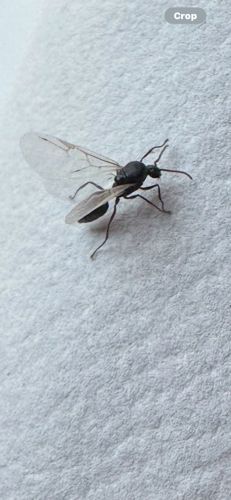Winged Ant (usually a Queen or Male Ant)
Scientific Name: Formicidae (Family level, specific genus/species not identifiable from image alone)
Order & Family: Hymenoptera, Formicidae
Size: 3 mm to 15 mm, depending on the species and whether it's a queen or male.

Natural Habitat
Found in a wide range of habitats, typically emerging from ant nests (underground, in wood, within structures) for mating flights.
Diet & Feeding
Winged ants themselves do not typically feed during their brief mating flight. However, ant colonies generally have diverse diets including nectar, honeydew, seeds, fungi, other insects, and scavenged food.
Behavior Patterns
The presence of wings indicates a reproductive phase of an ant. These alates (winged ants) emerge from the colony for nuptial flights, where they mate. Males die shortly after mating, while fertilized queens shed their wings to establish new colonies. Swarming often occurs synchronously, especially after rain or during specific times of the year.
Risks & Benefits
Risks include nuisance when large numbers swarm indoors; potential structural damage if certain species (e.g., carpenter ants) establish nests in wood. Benefits include their role as pollinators, seed dispersers, and predators of other insects, thus contributing to ecosystem balance.
Identified on: 9/15/2025